Part 63: Turn 9 - Soviet Combat Phase: Operations Perun 2, Veles 2, Son of Veles

Turn 9: September/October 1942
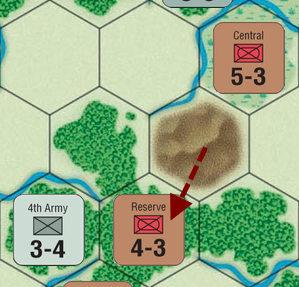
Seeing the weakness of the Germans, the Red Army decides to seize the initiative. In the north, it puts more pressure on the German line near Velikiye Luki, preventing the forces there from aiding more important operations further south.
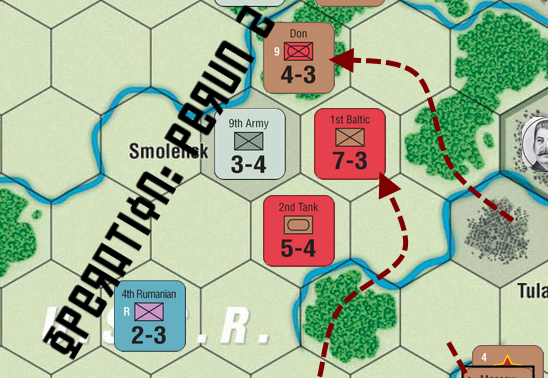
Around Smolensk, a large-scale offensive, dubbed Operatsiya "Perun 2", or Operation Perun 2 in English, aims at liberating this critical juncture, which would once and for all deny the Germans a chance at attacking Moscow.
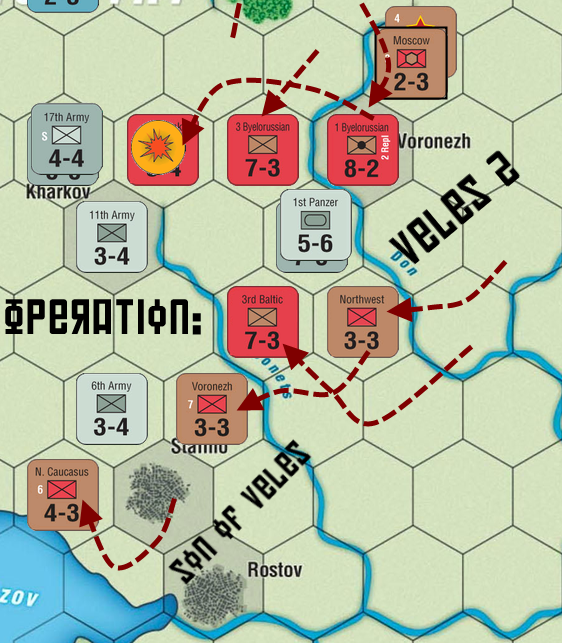
This is overshadowed, however, by Operation Veles 2, an ambitious plan to encircle and destroy forward positions of two German Panzer Armies. The forces brought to bear just in the main part of the operation are completely unheard of: over a million troops, around 1 200 tanks and 3 000 artillery guns simply dwarf any concentration of force seen in warfare. This doesn't account for additional diversionary actions to the south of the line (Operation Son of Veles).

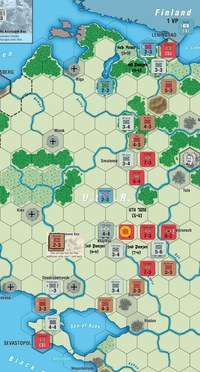
I need Fangz to place up to 5 Target markers. Once he does that, Logicone may pay cards to place Counterblows. After that, Fangz may commit cards to particular battles, followed by Logicone doing the same. Sector and Army Group commanders decide which units attack which hexes (provided there is a choice), where to retreat or advance and how to resolve any other combat results (specifically: accept CAs or not, whom to EX, if you have anyone particular in mind, where to place CBs). The deadline for all this is Tuesday, March 18, 7 PM GMT. Good luck, commanders.
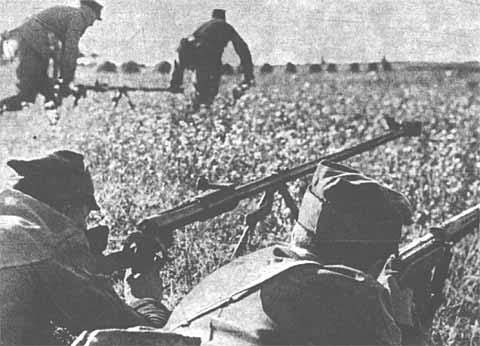
Like the Germans, the Soviets also tackled the problem of searching for an effective man-portable AT weapon. Between 1936 and 1938, they were trying to develop an effective anti-tank rifle, with the calibre of at least 20mm. But what they got was utter garbage and all prototypes were discarded; the army did, however, pick up something: a 14,5mm round, which was deemed very promising. In November 1938, they started over, with two new designs. One of them, the PTR-39, was even accepted into service, but under pressure from Grigory Kulik, chief of the Artillery Directorate, who was responsible for developing the weapon, it was deemed to unreliable and was never produced. Kulik then proceeded to not give a fuck about finding anything else, since obviously the future of AT combat was horse-drawn artillery, and also the fact that tanks were never going to make sense, ever. (The year is 1940, if you're keeping track.) They did, however, start producing the 14,5mm rounds.
In other words, they had a bullet, but they didn't have a gun to fire it with, and designing such a gun was postponed indefinitely.
So, on June 22, 1941, the Red Army did not have a man-portable AT weapon and had to rely on either own armour (which was lacking in many ways) or AT guns. In the face of this disaster, they hurriedly slapped a muzzle brake on a 1918 German design and started to produce it. Remember how they had a good AT round, though? Well, this thing had to be remade to fire the standard issue Soviet AT round... the 12,7 mm. The rifle was so ineffective that it was never officially entered into service.
Meanwhile, two Soviet design bureaus (Dyegtyaryov's and Simonov's) were already hard at work making something that could work. In just 22 days, they designed three prototype weapons. Dyegtyaryov had his team design one, which turned out to be junk, while he himself simply slapped together some things that had already worked: the general idea he stole from the PzB 38, while lock was pretty much copied wholesale from the Polish wz. 35 (Uruguay) rifle. But in the end, he had a simple, yet fairly effective weapon he could get into mass production. This became known as the PTRD-41 and you can see a Polish soldier shoot it in the picture above.
Simonov designed the PTRS-41, a semi-automatic AT rifle, which was fairly similar to the PTRD and they were both introduced into service, although the PTRS was more difficult to produce and only 77 were made by the end of 1941 (compared to 17 000 PTRDs).
They both could penetrate the side armour of any German tank up to and including early versions of the Panther, but in most cases only at very close range. They were also heavy and fairly inaccurate. Unlike their opponents, the Soviets did not develop rocket-propelled shaped-charge AT weapons until way after the war, so they had to use the rifles even way past the point where it didn't really make sense any more. However, given that the Wehrmacht did not put as much heavy armour on everything as the Soviets, it still remained useful against stuff like self-propelled artillery guns. And against other targets there was always the solution of using More Tanks.